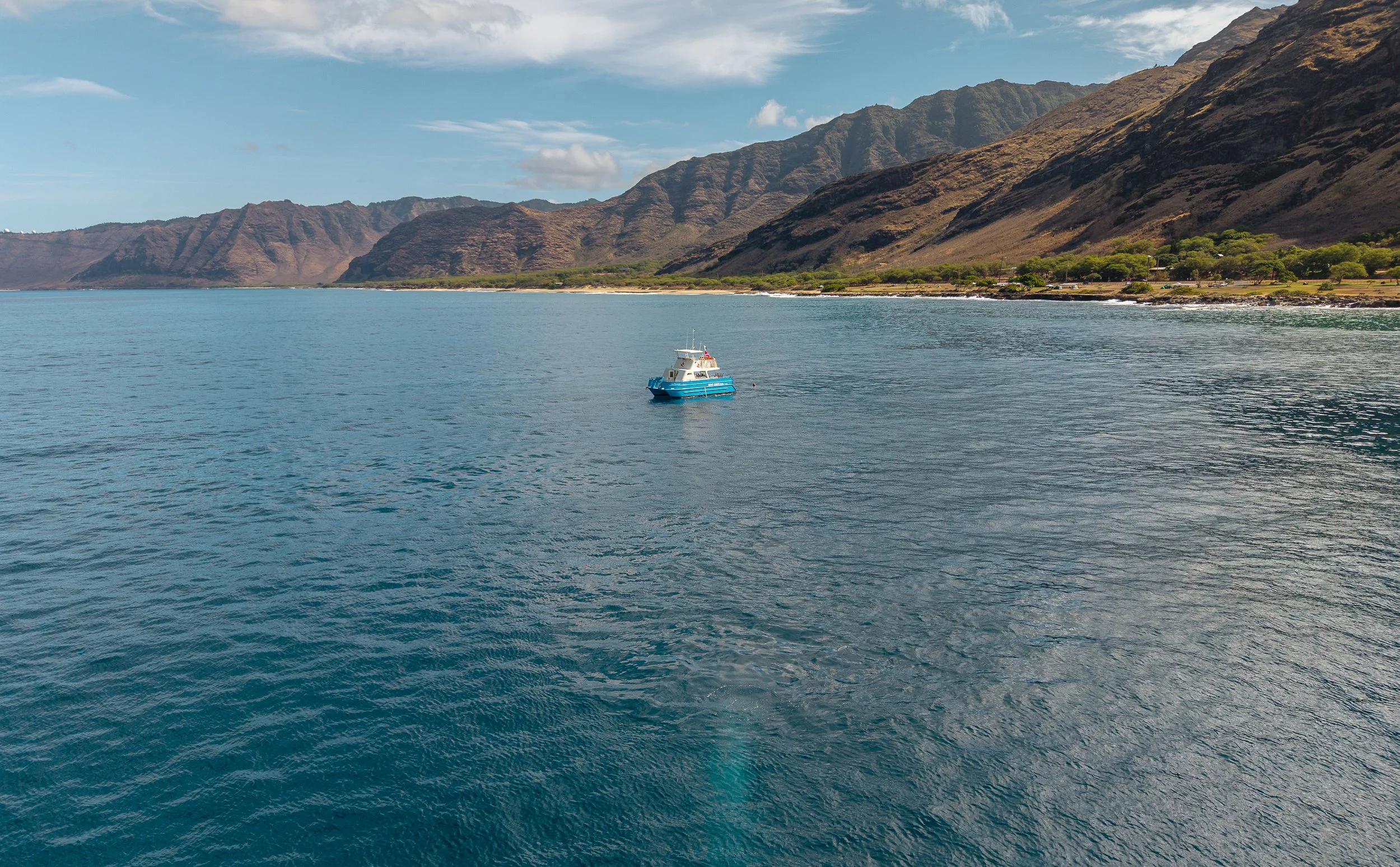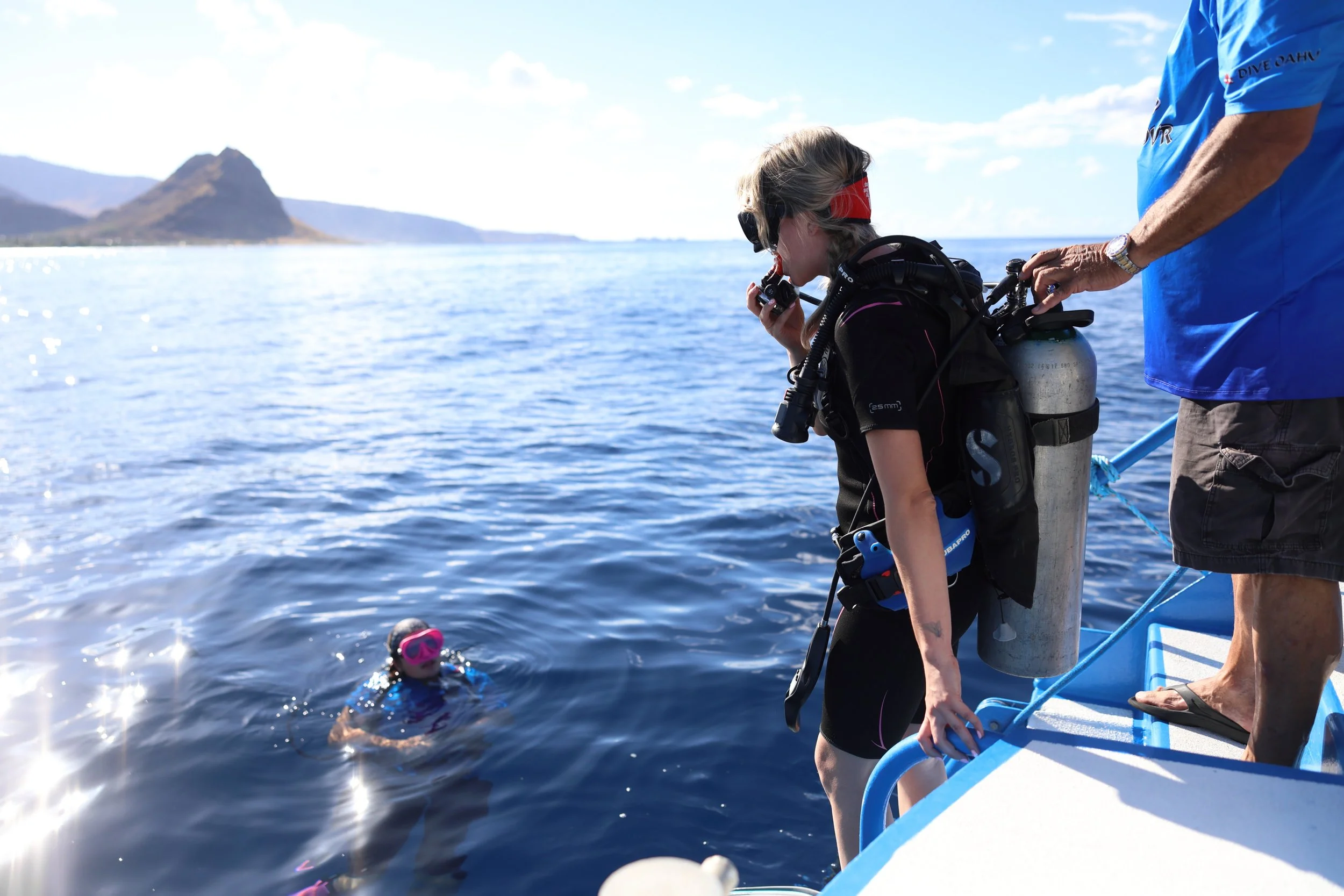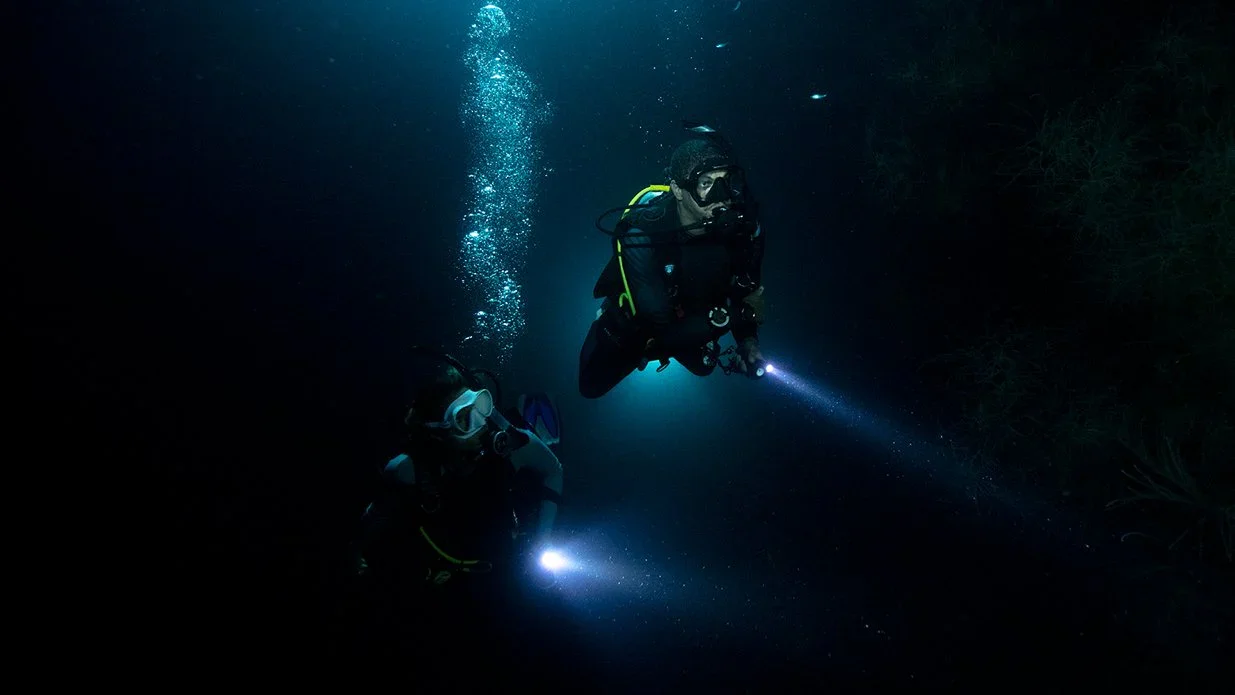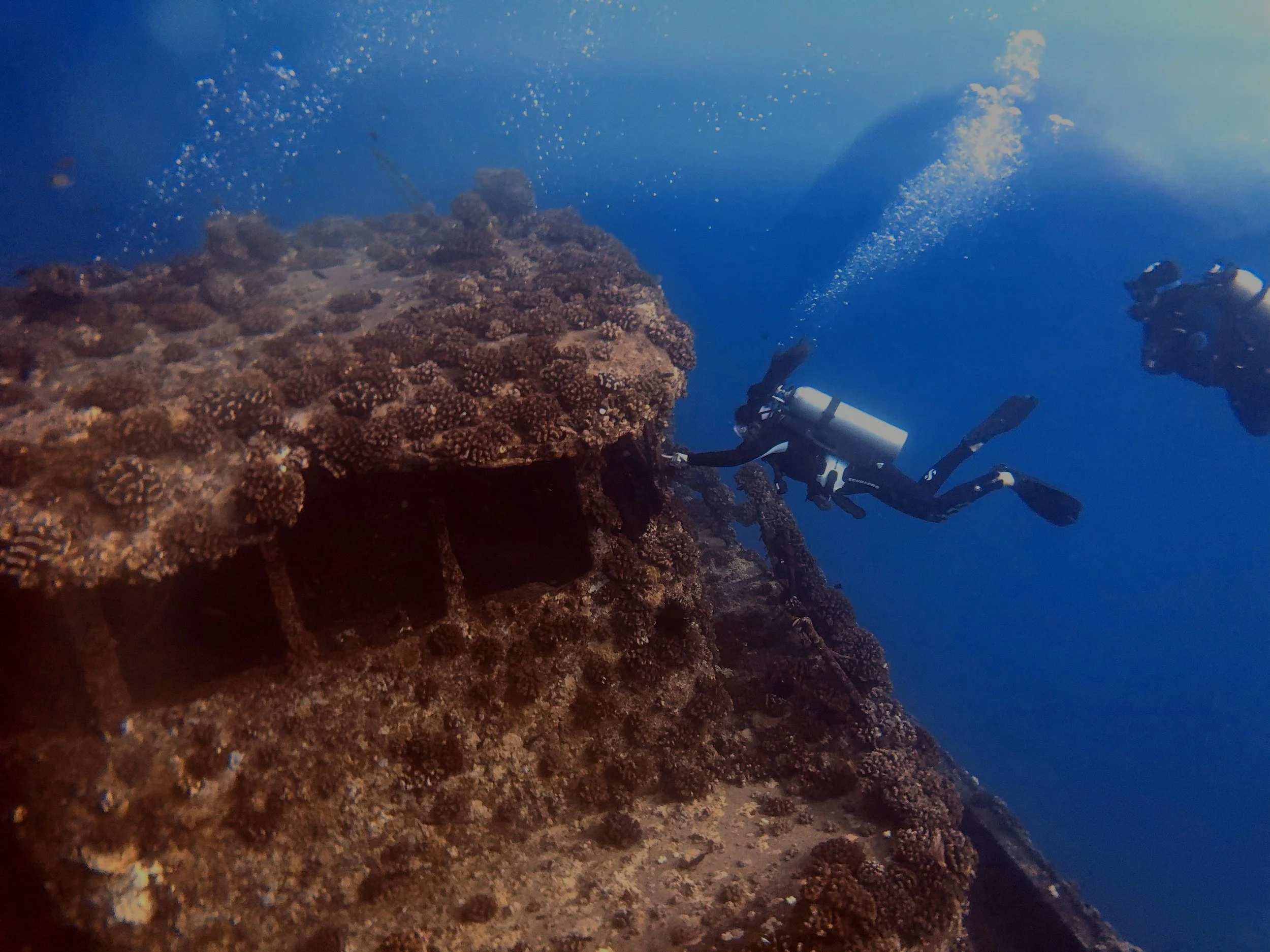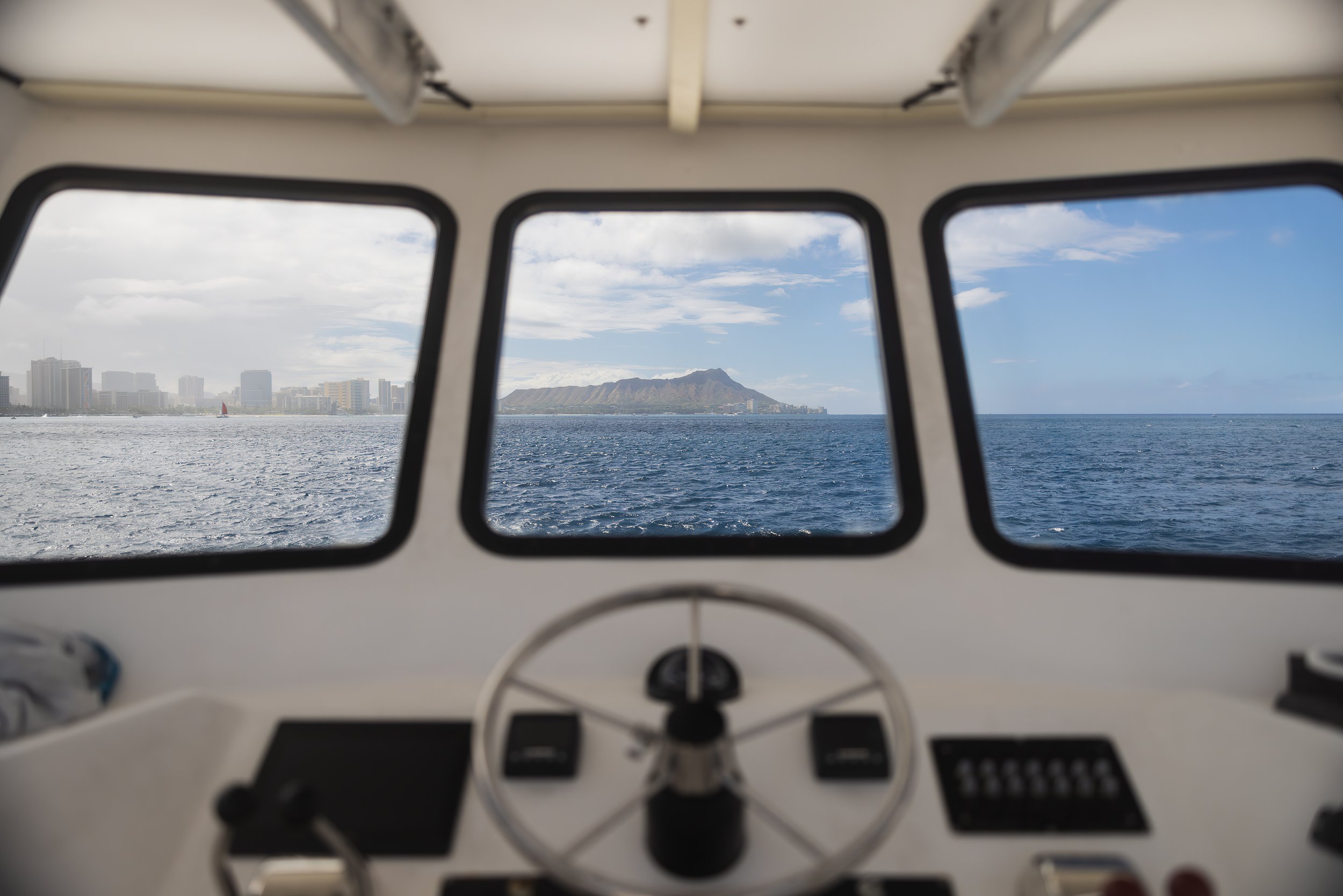
Scuba Tours & Charters
South Oahu: Waikiki
⚓ Wreck & Reef Dive Tour:
South Shore Oahu
2 Tank Dive
The Wreck & Reef Dive Tour is one of the most popular scuba diving experiences in Oʻahu. This 2-tank adventure begins with a deep wreck dive at sites like the YO-257, San Pedro, or Sea Tiger — iconic sunken ships teeming with marine life. After your surface interval, you’ll dive a second site: a vibrant reef filled with Hawaiian endemic species, rays, eels, and reef sharks.
Led by PADI-certified instructors, this tour is ideal for certified divers looking for a mix of underwater history and natural beauty — all in one unforgettable trip off the coast of Waikiki.
📍 Location: Waikiki, South Shore
🕒 Duration: 3–4 hours
🧒 Ages: 8+ (certified divers)
💰 Price: $99–$231
What to Expect
2 dives: 1 deep wreck + 1 reef
Professional dive guide (PADI-certified)
Gear included (mask, fins, wetsuit, BCD, reg, tank)
Surface interval with water + snacks
Depart from Kewalo Basin Harbor
Perfect For
Certified divers seeking variety
Wreck enthusiasts + reef photographers
Visitors looking for a half-day scuba experience
Travelers based in Waikiki
🤿 Introductory Scuba Dive:
No Experience Needed
1 Introductory Skills Dive & 1 Fun Dive
Want to try scuba diving in Hawaii without certification? Dive Oʻahu’s Introductory Diving experience is perfect for beginners and first-timers. You’ll start with a short lesson from a certified PADI instructor, then enter the water for a guided dive over a shallow reef teeming with fish and marine life.
This is one of the top-rated “Discover Scuba Diving” programs in Honolulu — giving you the chance to explore underwater safely, even if you’ve never put on a tank before. No experience necessary — just bring your sense of adventure.
📍 Location: Waikiki, South Shore Oahu
🕒 Duration: 4 hours
🧒 Ages: 10+
💰 Price: $79–$251
What to Expect
In-water training with a certified instructor
1 guided reef dive (15–35 ft max)
All scuba gear included
Small group sizes for comfort and safety
Depart from Kewalo Basin Harbor
Perfect For
First-time divers
Teens, families, and couples
Anyone curious about scuba
Visitors not ready for full certification
🐠 Shallow Reefs Scuba Tour:
Beginner-Friendly
2 Tank Dive
Perfect for beginners and snorkelers, the Shallow Reefs Tour visits some of Waikiki’s most beautiful coral reef sites — with calm conditions, great visibility, and plenty of marine life. You’ll see schools of tropical fish, butterflyfish, wrasse, starfish, and maybe even turtles or reef sharks.
Both divers and snorkelers can enjoy this relaxed 2-tank experience, led by Dive Oʻahu’s certified professionals. No strong currents, no deep dives — just the joy of exploring Hawaii’s marine life in warm, clear water.
📍 Location: Waikiki, South Shore
🕒 Duration: 3–4 hours
🧒 Ages: 8+ (certified divers or snorkelers)
💰 Price: $79–$251
What to Expect
2 shallow reef dives (30–50 ft max)
Guided by professional PADI instructors
Full gear included for both scuba and snorkelers
Surface interval with refreshments
Perfect For
New divers and families
Those who prefer shallower sites
Snorkelers wanting boat access reefs
Divers looking for relaxing, colorful sites
🌙 Night Dives in Waikiki:
Explore After Dark
2 Tank Dive
Discover a completely different side of the ocean. Dive Oʻahu’s Night Dive experience includes a twilight dive followed by a full night dive — giving you the chance to see octopus, eels, crabs, lobsters, and other nocturnal creatures in action.
Departing just before sunset, this tour gives you two tanks at two unique times of day. Your PADI professional will guide you with dive lights through some of Waikiki’s favorite reef sites — now transformed into mysterious nighttime ecosystems.
📍 Location: South Shore – Waikiki
🕒 Duration: 3–4 hours
🧒 Ages: 8+ (certified divers)
💰 Price: $99–$231
What to Expect
1 twilight dive + 1 night dive
Dive lights provided
Full scuba gear included
Professional guided briefing & safety checks
Depart from Kewalo Basin Harbor
Perfect For
Certified divers looking for something new
Photographers and thrill-seekers
Returning guests wanting a unique experience
Marine life enthusiasts
🛥️ The Wreck Tour:
3-Day Scuba Adventure
6 Tanks Across 3 Mornings
If you love wreck diving, this is your ultimate itinerary. Dive Oʻahu’s 3-Day Wreck Tour gives certified divers the chance to explore the best sunken ships around Honolulu and Waikiki — including the Sea Tiger, YO-257, San Pedro, Corsair, Navy Tug, and more.
You’ll complete two guided dives each morning, then have your afternoons free to enjoy Oʻahu topside. This tour is ideal for experienced divers who want to go deep, photograph epic wrecks, and cover all of South Shore’s top-rated dive sites.
📍 Location: South Shore – Waikiki
🕒 Duration: 3 days (2 dives per day)
🧒 Ages: 15+ (certified divers)
💰 Price: Starts at $635
📅 Availability: Multi-day bookings available
What to Expect
6 wreck dives across 3 mornings (2/day)
Certified instructor on each dive
Gear available or bring your own
Wrecks vary by day and ocean conditions
Return to shore by ~11 AM daily
Perfect For
Wreck diving enthusiasts
Dive travelers planning a multi-day itinerary
Returning guests who’ve done the reefs
Photographers and advanced divers
⚓ 3 Tank Scuba Tour:
Oahu’s Best Sites
3 Tank Dive
The Ultimate 3-Tank Dive is Dive Oʻahu’s most action-packed scuba experience — a deep-dive adventure visiting three of Oʻahu’s top wreck and reef sites. Depending on ocean conditions, your day may include legendary spots like the Mahi Wreck, Corsair, YO-257, Ewa Pinnacles, or the Navy Tug (USS Nashua).
Led by PADI-certified guides, this full-morning tour is designed for certified divers ready to go deep, explore multiple ecosystems, and spot everything from green sea turtles and reef sharks to dolphins and humpback whales in winter. Between dives, enjoy snacks, water, and a light lunch while cruising the coastline.
📍 Location: South Shore of Oʻahu
🕒 Duration: 5–6 hours
🧒 Ages: 15+ (certified divers only)
💰 Price: $302
📅 Availability: Select mornings – 7:00 AM departure
What to Expect
3 dives at top wreck + reef sites (weather-dependent)
Possible locations: Mahi Wreck, Navy Tug, Corsair, YO-257, Ewa Pinnacles
PADI-certified in-water guide
Full set of premium scuba gear included
Surface intervals with snacks + light lunch
Depart from Kewalo Basin Harbor
Perfect For
Certified divers looking to maximize time underwater
Visitors wanting to dive multiple sites in one day
Wreck + reef lovers
Photographers, adventurers, and return guests
🛥️ Private Scuba Dive & Snorkel Charters
Whether you’re planning a birthday, wedding, or corporate outing, Dive Oʻahu’s Private Charters give you full control of your experience. Choose between scuba diving, snorkeling, or cruising along the scenic South Shore — all on your own private boat with a professional captain and crew.
Explore vibrant coral reefs, swim with turtles, or just relax with your group and soak in the Waikiki coastline. It’s the perfect way to celebrate something special or enjoy the ocean at your own pace.
📍 Location: Waikiki, South Shore Oʻahu
🕒 Duration: 2–4 hours (customizable)
🧒 Ages: All ages welcome
💰 Price: Based on guest count + activity
📅 Availability: Flexible – reservation required
What to Expect
Private boat with licensed captain + dive/snorkel guide
Choose your experience: scuba, snorkel, or cruise
Departs from Kewalo Basin Harbor
All equipment included
Light snacks + refreshments onboard
Perfect For
Birthdays & family reunions
Wedding parties & holiday events
Corporate outings & team-building
Custom dive/snorkel excursions
🎇 Friday Night Fireworks Cruise: BYOB Waikiki Boat Ride
End your week with a Waikiki fireworks show like no other — from the comfort of Dive Oʻahu’s BYOB boat. Our Friday Night Fireworks Cruise gives you front-row views of the Honolulu skyline lighting up the night sky — minus the crowds, noise, and hassle of the beach.
Bring your own drinks, grab a seat on deck, and enjoy good vibes as you watch the show and cruise the south shore.
📍 Location: South Shore – Waikiki
🕒 Duration: 2 hours
🧒 Ages: All ages welcome
💰 Price: Varies by date
📅 Availability: Fridays only – 6:00 PM departure
What to Expect
2-hour BYOB boat cruise from Ala Moana / Kewalo Basin Harbor
Epic views of the Friday fireworks show
Relaxed, casual setting — no dress code
Smooth ride along the coastline
Perfect For
Sunset lovers
Families and casual groups
Date nights and friend hangouts
Visitors wanting to see Waikiki by water
